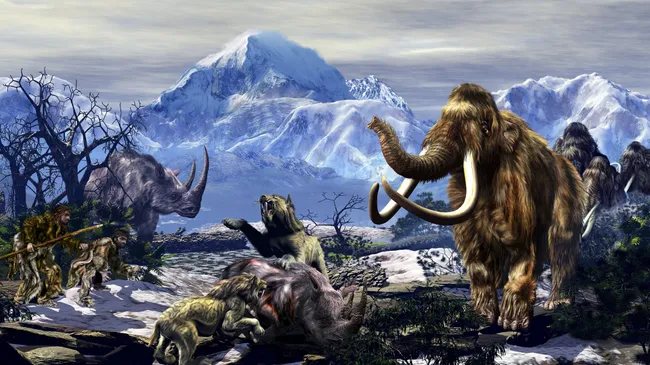De-extinction, the science of resurrecting extinct species, is progressing in leaps and bounds. Here are six creatures that researchers could bring back to life — and one they’ve already revived.
Scientists are getting closer than ever to reviving extinct species. Iconic creatures like the woolly mammoth, the dodo, and the thylacine (also known as the Tasmanian tiger) may soon roam the Earth once again, according to researchers and biotech companies working on “de-extinction” projects.
The process begins with extracting DNA from the extinct species. If a full genome is available, it’s used directly; if not, key genes are inserted into the DNA of a closely related living species. This modified DNA is then placed into an egg cell from the same modern relative, using a technique called nuclear transfer. The result is an animal genetically similar to the one that vanished.
So far, scientists have attempted to bring back at least three extinct species. In 2003, Spanish researchers cloned a bucardo — a subspecies of the Pyrenean ibex that went extinct in 2000. While a baby was successfully born, it died shortly afterward due to a lung defect.
A decade later, in 2013, scientists managed to create embryos of the southern gastric-brooding frog (Rheobatrachus silus), a unique Australian species that birthed its young through its mouth and disappeared in the 1980s due to fungal infection. Although the embryos began to develop, none survived to become tadpoles.
Since then, the science has advanced. In April 2025, researchers announced the birth of three genetically engineered “dire wolf” pups. These Ice Age predators (Aenocyon dirus) went extinct over 10,000 years ago, but scientists were able to recreate key traits through gene editing.
With breakthroughs continuing, some researchers believe we could see the first woolly mammoths revived within the next decade. Whether this effort reshapes conservation or crosses into controversial territory, one thing is certain: the line between extinction and survival is becoming increasingly blurred.
Woolly mammoth
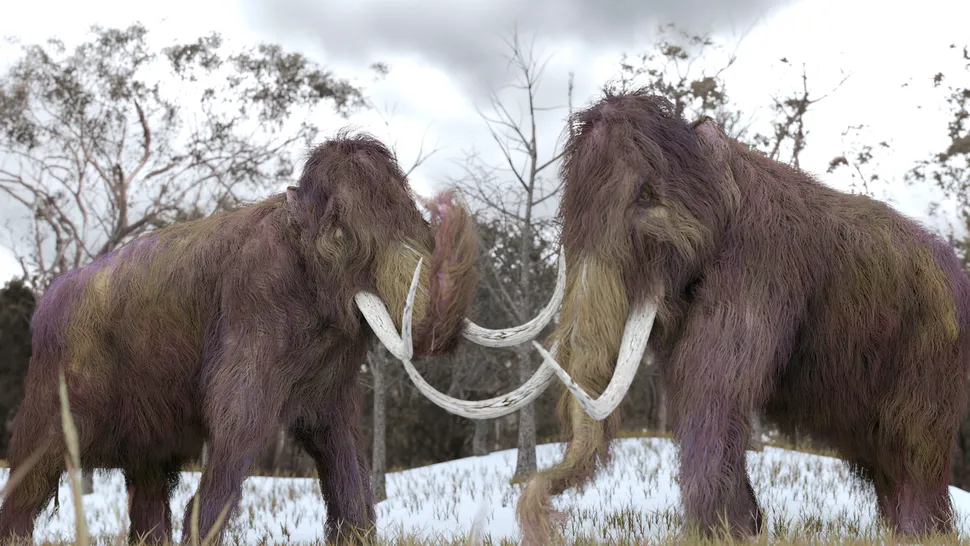
Woolly mammoths (Mammuthus primigenius) roamed the Earth between 300,000 and 10,000 years ago during the last ice age. Remarkably, a small group managed to survive on Wrangel Island until around 4,000 years ago. The majority of the species inhabited vast stretches of tundra across what is now Asia, Europe, and North America. Their extinction was likely caused by a combination of climate change, human hunting, and declining genetic diversity.
Thanks to the Arctic permafrost, many woolly mammoth carcasses have been preserved in extraordinary condition — including intact DNA and even the 3D structure of their genome. This gives scientists the ability to reconstruct a genetic blueprint of the animal. By using a modern elephant’s egg cell in a process called nuclear transfer, researchers hope to create an elephant-mammoth hybrid that closely resembles the extinct species. The U.S.-based de-extinction company Colossal Biosciences has announced plans to produce its first “mammoth” calves by 2028, signaling that de-extinction may soon move from theory to reality.
In March 2025, Colossal revealed a striking development: genetically engineered “woolly mice” with thick, golden-brown fur inspired by mammoth hair. To create these mice, scientists identified six genes in mice that affect fur texture, length, and color. Some of these genes were turned off, while others were modified to match known mutations from mammoth DNA. These woolly mice serve as a proof of concept, demonstrating Colossal’s ability to make multiple precise genetic changes that replicate mammoth-like traits in a different species. However, transforming a mouse into a mammoth-like elephant remains a massive leap — and much research still lies ahead before woolly mammoths could truly return.
Dodo
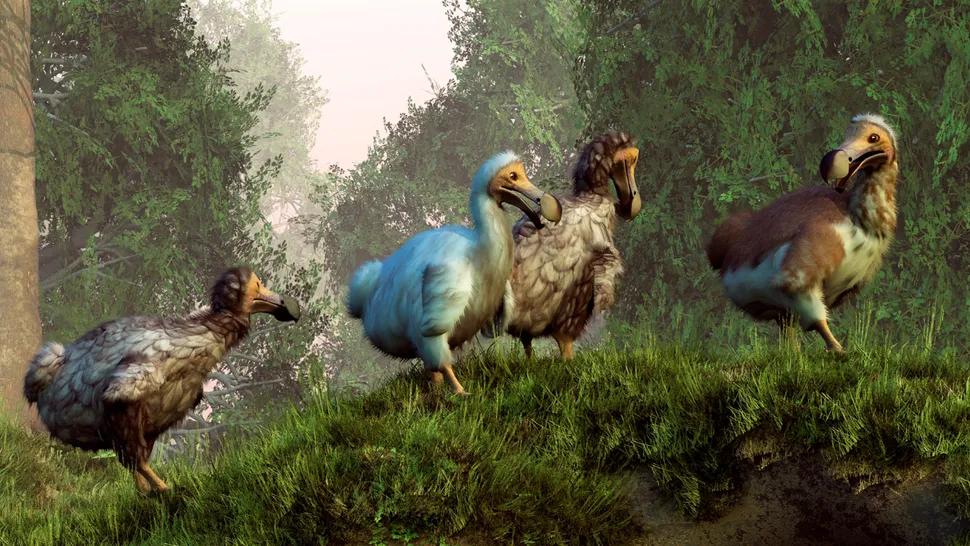
The dodo (Raphus cucullatus) was a large, flightless bird native to Mauritius, an island in the Indian Ocean near Madagascar. It famously went extinct in the 17th century, making it one of the earliest and most iconic examples of human-driven extinction. When European colonizers arrived on the island in 1598, they brought with them a host of invasive species — including rats, cats, and monkeys — that preyed on dodo eggs and chicks. Within just a few decades, the dodo population plummeted. Combined with deforestation and overhunting by humans, this predation ultimately led to the bird’s extinction by 1681.
Today, remnants of dodo DNA survive in natural history museum collections. In 2022, scientists successfully reconstructed the bird’s genome using an exceptionally well-preserved specimen housed in Denmark. However, bringing the dodo back is still a major challenge. One key hurdle is introducing enough genetic diversity into the reconstructed genome to avoid creating a population of clones, according to Ben Lamm, CEO and co-founder of Colossal Biosciences.
On a more optimistic note, Lamm pointed out that birds offer a logistical advantage over mammals when it comes to de-extinction: their entire reproductive process takes place within an egg. This makes the dodo a more feasible candidate for revival in the near future, especially compared to larger species like woolly mammoths or thylacines.
Thylacine

The Tasmanian tiger, or thylacine (Thylacinus cynocephalus), was a wolf-like, carnivorous marsupial known for the distinctive stripes on its lower back. Once widespread across mainland Australia, the species vanished from the continent between 3,000 and 2,000 years ago, likely due to human activity and competition with dingoes. However, a surviving population held on in Tasmania — until European settlers arrived. In the late 19th century, fearing for their livestock, settlers placed a bounty on thylacines, triggering widespread hunting. The species was pushed to extinction, with the last known individual dying in captivity in 1936.
Despite their tragic history, thylacines are considered a strong candidate for de-extinction. According to Andrew Pask, a professor of genetics and developmental biology at the University of Melbourne, the abundance of preserved specimens offers a valuable resource for DNA extraction. “Every major museum wanted one in their collection, so there are hundreds of samples around the globe, and some are exceptionally preserved,” said Pask, who is collaborating with Colossal Biosciences on the thylacine revival. The challenge, however, lies in the highly fragmented nature of the DNA, which requires extensive editing to reconstruct a usable genome. In 2017, Pask and his team successfully sequenced a complete thylacine genome, and in 2023, they even extracted RNA from a preserved specimen — a scientific first. Still, as Pask notes, many obstacles remain before a thylacine could walk the Earth once again.
Passenger pigeon
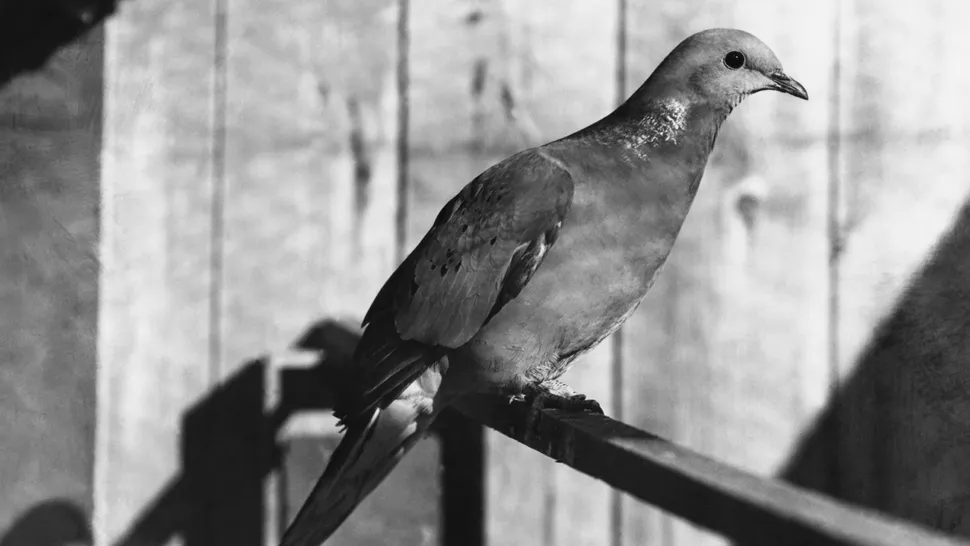
The passenger pigeon (Ectopistes migratorius) was once the most numerous bird species in North America, comprising an estimated 25% to 40% of the continent’s total bird population before the 17th century, according to the Smithsonian Institution. However, European settlers hunted the birds extensively for meat and decimated their forest habitats. Their tendency to travel in massive flocks and breed communally made them especially susceptible to overhunting, as noted by the Audubon Society. The species’ dramatic decline culminated in 1914 with the death of the last known individual — a female named Martha, housed at the Cincinnati Zoo and named after Martha Washington.
Today, dozens of preserved passenger pigeon specimens exist in museum collections, allowing scientists to extract and sequence their DNA. However, due to severe fragmentation, restoring the species in its exact original form remains unlikely. Instead, the biotechnology company Revive & Restore is taking a hybrid approach: incorporating key genetic traits of the passenger pigeon into the DNA of a closely related species, the band-tailed pigeon (Patagioenas fasciata). The goal is to produce birds that resemble passenger pigeons both physically and behaviorally.
Revive & Restore aims to hatch the first generation of these hybrid pigeons by 2025 and eventually conduct trial releases into the wild. If successful, the project could not only revive a piece of lost biodiversity but also demonstrate how genomic technologies can help restore ecosystems — in this case, the eastern forests of North America where passenger pigeons once played a vital role.
Aurochs

Aurochs (Bos primigenius) were the wild ancestors of all modern cattle, including domestic cows (Bos taurus). These massive, horned animals roamed North Africa, Asia, and nearly all of Europe for thousands of years, with fossils dating back to around 700,000 years ago. After the last ice age, aurochs were the largest land mammals left in Europe, but human activity — particularly overhunting and habitat destruction — drove them to extinction. The last known aurochs died in 1627 in Poland’s Jaktorów Forest.
Unlike other extinct species, the de-extinction efforts for aurochs do not rely on genetic engineering. Modern cattle still carry much of the aurochs’ DNA, which has allowed researchers to explore a method known as back-breeding. This technique involves selectively breeding cattle that exhibit physical traits and behaviors similar to those of the aurochs, particularly focusing on Southern European breeds that are kept in relatively wild conditions. According to Ronald Goderie, an ecologist and director of the Taurus Foundation in the Netherlands, the project has already produced over six generations of cattle and is “very close” to creating an animal that closely resembles the extinct aurochs.
Quagga

The quagga (Equus quagga quagga) was an extinct subspecies of the plains zebra (Equus quagga), the most widely distributed zebra species. Native to South Africa, quaggas were distinguished by having fewer stripes on their hindquarters compared to other zebras. They were hunted for their unique pelts and persecuted by farmers seeking to graze livestock without competition from wild animals. Relentless hunting in the 19th century led to the quagga’s extinction in the wild, and the last captive quagga died in 1883. Only seven quagga skeletons remain, making them some of the rarest in the world, according to University College London (UCL).
Efforts to resurrect the quagga, similar to the aurochs project, do not involve genetic engineering. Since 1987, The Quagga Project in South Africa has been selectively breeding plains zebras with fewer stripes in an attempt to reintroduce traits characteristic of the quagga. According to the project’s website, the aim is to retrieve the genes responsible for the quagga’s unique striping pattern. However, this approach has been controversial. Critics argue that the resulting animal would still be a plains zebra, not a true quagga, and that funds might be better used for other conservation efforts. Alternatively, some scientists, including those at UCL, suggest that cloning quaggas could be a possibility by extracting DNA from preserved quagga specimens — such as bone marrow or taxidermy remains — and injecting it into the egg cell of a plains zebra.
Dire wolf
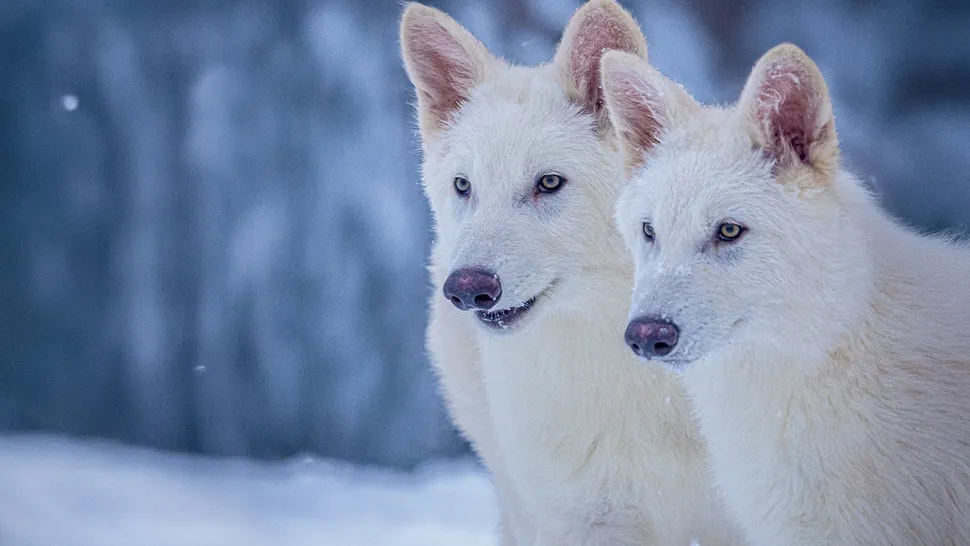
Dire wolves (Canis dirus) were extinct predators that roamed the Americas between 125,000 and 10,000 years ago. These large, powerful wolves are often remembered thanks to their portrayal in popular culture, including the character Ghost, who is John Snow’s pet dire wolf in the HBO series “Game of Thrones.” Dire wolves were larger than modern wolves and had thick, white fur, large teeth, and a distinctive howl.
While the exact cause of their extinction remains unclear, scientists suggest that climate change and competition for food with human hunter-gatherers likely contributed to their downfall. As the climate shifted and many large herbivores, which were a primary food source for dire wolves, went extinct at the end of the last ice age, these apex predators struggled to find sustenance, leading to their eventual extinction.
In April 2025, biotechnology company Colossal Biosciences made headlines by announcing the successful birth of three genetically engineered dire wolf pups. According to Colossal, the pups were born after a detailed genetic engineering process. The first two, Romulus and Remus, were born on October 1, 2024, and the third, Khaleesi, was born on January 30, 2025. The scientists behind the project extracted and analyzed DNA from a 13,000-year-old dire wolf tooth and a 72,000-year-old skull. By comparing this ancient DNA with that of modern gray wolves (Canis lupus), they identified the key genetic differences. Using CRISPR gene-editing technology, they modified the gray wolf genome to match that of the dire wolf. The modified DNA was then inserted into egg cells from gray wolves, and the embryos were implanted into the wombs of domestic dogs. After 65 days of gestation, the genetically engineered pups were born, marking a significant milestone in the de-extinction process.
